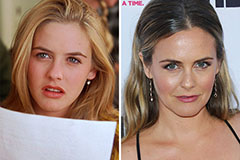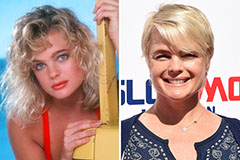The Greatest Guide To Dementia Fall Risk
Table of ContentsThe smart Trick of Dementia Fall Risk That Nobody is Talking AboutDementia Fall Risk - An OverviewThe Best Guide To Dementia Fall Risk6 Simple Techniques For Dementia Fall Risk
An autumn risk evaluation checks to see exactly how likely it is that you will fall. It is mainly done for older grownups. The evaluation typically includes: This consists of a collection of concerns about your overall wellness and if you've had previous falls or troubles with balance, standing, and/or strolling. These devices test your stamina, balance, and stride (the means you walk).Interventions are suggestions that may decrease your danger of falling. STEADI includes three actions: you for your threat of falling for your risk elements that can be boosted to try to prevent drops (for instance, equilibrium troubles, damaged vision) to minimize your risk of falling by using efficient approaches (for instance, giving education and learning and sources), you may be asked a number of inquiries including: Have you fallen in the past year? Are you worried about dropping?
If it takes you 12 secs or even more, it may suggest you are at higher threat for a loss. This test checks stamina and balance.
The settings will certainly get more difficult as you go. Stand with your feet side-by-side. Move one foot halfway forward, so the instep is touching the large toe of your various other foot. Move one foot totally before the other, so the toes are touching the heel of your various other foot.
Dementia Fall Risk Can Be Fun For Everyone
The majority of drops take place as an outcome of several contributing elements; consequently, managing the danger of dropping starts with recognizing the variables that add to fall threat - Dementia Fall Risk. A few of the most appropriate threat elements consist of: Background of previous fallsChronic clinical conditionsAcute illnessImpaired stride and balance, reduced extremity weaknessCognitive impairmentChanges in visionCertain high-risk medicines and polypharmacyEnvironmental elements can also enhance the danger for falls, consisting of: Insufficient lightingUneven or damaged flooringWet or unsafe floorsMissing or damaged handrails and grab barsDamaged or improperly fitted devices, such as beds, wheelchairs, or walkersImproper use assistive devicesInadequate supervision of individuals living in the NF, including those who exhibit aggressive behaviorsA successful autumn risk monitoring program requires a comprehensive professional assessment, with input from all members of the interdisciplinary team

The treatment plan should likewise include interventions that are system-based, such as those that promote a risk-free setting (appropriate lights, hand rails, grab bars, etc). The effectiveness of the interventions should be evaluated periodically, and the care strategy modified as required to mirror modifications in the fall risk assessment. Implementing a loss threat management system utilizing evidence-based finest method can lower the prevalence of drops in the NF, while restricting the potential for fall-related injuries.
Facts About Dementia Fall Risk Uncovered
The AGS/BGS standard recommends evaluating all adults matured 65 years and older for loss danger annually. This testing consists of asking clients whether they have actually fallen 2 or even more times in the past year or sought medical focus for an autumn, or, if they have not fallen, whether they really feel unsteady when strolling.
Individuals who have actually fallen once without injury needs to have their equilibrium and gait evaluated; those with stride or balance abnormalities ought to get additional analysis. A history of 1 fall without injury and without gait or equilibrium issues does not require further assessment beyond ongoing yearly fall danger testing. Dementia Fall Risk. A loss danger assessment is needed as component of the Welcome to Medicare assessment

What Does Dementia Fall Risk Do?
Recording a falls history is one of the top quality indications for autumn prevention and management. copyright medicines in specific are independent forecasters of falls.
Postural hypotension can usually be eased by decreasing the dosage of blood pressurelowering drugs and/or stopping medications that have orthostatic hypotension as an adverse effects. Use above-the-knee support hose and copulating the head of the bed boosted may also minimize postural reductions in high blood pressure. The advisable elements of a fall-focused health examination are displayed in Box 1.

A TUG time higher than or equivalent to 12 seconds suggests high fall threat. Being unable to stand up from a chair of knee elevation without using one's arms shows enhanced autumn threat.
 Alicia Silverstone Then & Now!
Alicia Silverstone Then & Now! Amanda Bearse Then & Now!
Amanda Bearse Then & Now! Nancy Kerrigan Then & Now!
Nancy Kerrigan Then & Now! Erika Eleniak Then & Now!
Erika Eleniak Then & Now! Kerri Strug Then & Now!
Kerri Strug Then & Now!